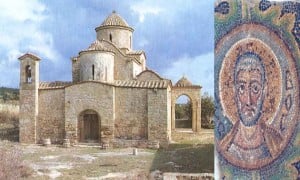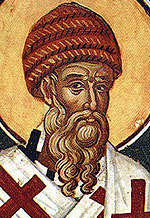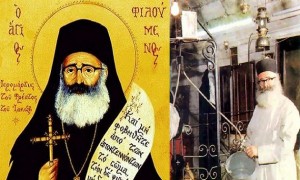Elder Germanos Stavrovouniotis (1906-1982)
20 December 2016Elder Germanos was born in the village of Avgorou in the Famagusta region of Cyprus in 1906, to God-fearing parents, Nikolaos and Margarita Hatzigeorgis. When, as a child, he read the life of Saint Ioannis the Hut-Dweller, he was moved to take the decision to follow the monastic way of life.
At the age of 16 he entered the Monastery of Stavrovouni. He displayed exemplary zeal and remarkable obedience as a novice monk. He was given the blessing of the habit at the age of 24 and his name was changed from Georgios to Monk Germanos. He was ordained deacon the following year, tonsured as a Great Schema monk at the age of 29 and ordained hieromonk when he was 38 years old.
![Gerontas-Germanos-Stavrovouniotis-IN[1]](https://pemptousia.com/files/2012/12/Gerontas-Germanos-Stavrovouniotis-IN1.jpg)
The purity of his life, his proven sobriety and his administrative abilities were the principal reasons for his election as abbot in 1952, when the previous abbot, Elder Dionysios II, of blessed memory, fell asleep in the Lord. As abbot he was the first to show a good example in all aspects of the monastic life: first in forbearance, forgiveness, meekness, patience, service, diligence, silence, and participation in divine services. He was meticulous about cultivating unceasing prayer within his soul.
One of his chief virtues was his deliberate anonymity. He scrupulously avoided any self-promotion to the outside world, and even to those around him. He took the greatest care to hide his virtues, which is why so few were able to recognize the incomparable treasure that was hidden behind his usually lowly appearance. His unceasing prayer, with tears, his angelic presence before the dread Altar of the Lord at the time of the Divine Liturgy and the unique and inimitable example of his whole way of life reaped the richest of spiritual harvests, not only in his monastery itself, but also among women’s monasticism in Cyprus, which flourished and was supported largely due to his efforts.
He was a wonderful confessor and spiritual guide who brought a whole host of people to repentance and to a genuine spiritual return to Christ. The whole of his life really was a living testimony to the living Jesus.
His life on earth was sealed with a martyr’s end. On the afternoon of 31 August, 1982, the final day of the Church’s year and a day dedicated especially to the Mother of God, to whom the Elder was extremely devoted, and while he was returning from hard work in the olive groves, he fell down a steep ravine where, alone and unaided he met a martyr’s death. As the Church year came to a close, so, too, did the life of the Elder, a genuine ecclesiastical figure whose whole life was, in essence, an enduring sacrifice, an unceasing liturgy. Without question he was transported to where the eternal Liturgy is celebrated, to the Altar above. The monks who sought him throughout the whole of that evening, finally came across him the next day in a attitude of death and prayer, arms and legs crossed, so that even this sign of his spiritual efforts was visible, even in those last agonizing moments of his martyr’s death, which, like the pains of another birth, introduced him into eternity.
Source: Archimandrite Athanasios, Abbot of the Holy Monastery of Stavrovouni, Ο Γέρων Γερμανός Σταυροβουνιώτης (1906-1982), Φως ιλαρόν και μυστικόν στη σκοτοδίνη των σύγχρονων καιρών, Publications of the Holy Monastery of Stavrovouni, Nikosia, Cyprus, 2nd edition, October 2000.










